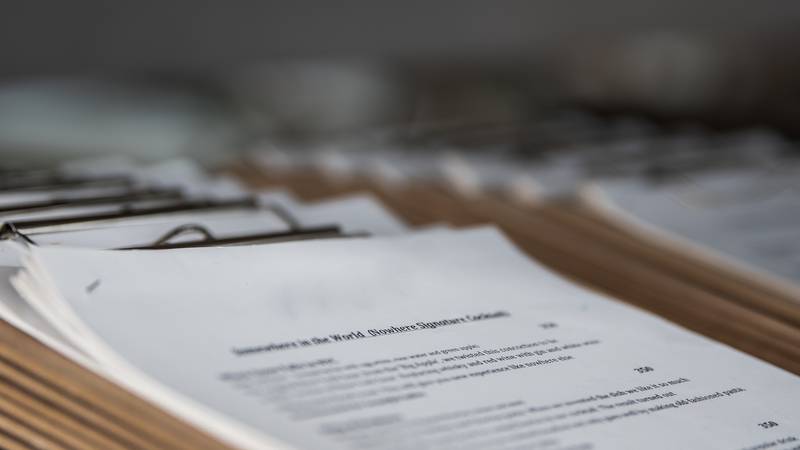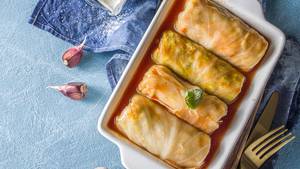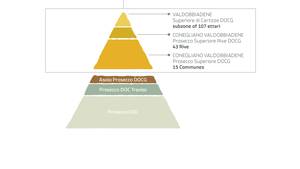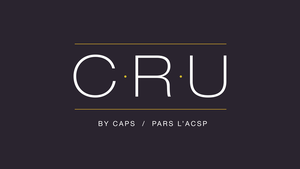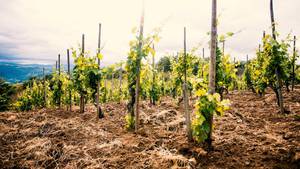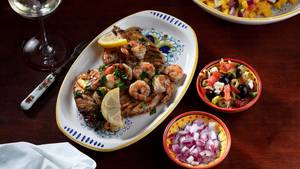There was a time when a medium-dry German white wine was a “near automatic” inexpensive by the glass option, but as the Canadian palate has migrated from sweet-edged to dry, there has been an edit, elevation and even an escalation of Germany on fine dining wine lists.
Dare we say Germany is returning to its lustrous, luxurious past? Sales in Canada of German premium wine skyrocketed last year. According to data supplied by Wines of Germany’s Canadian market representative, Andros Communications, Germany is repositioning itself as a source of high quality, premium and prestigious wines, as savvy sommeliers have always known them to be.
Food affinity is a key differentiator. According to Pier-Alexis Soulière, reigning Best Sommelier of Canada, “German wines are the perfect lemonade! They are thirst quenching, low in alcohol and energetic. In the restaurant context they scream versatility when it comes to food and wine pairing.” The sentiments are shared by Alex Allardyce of the prestigious Manitoba Club who says “having a few killer German Rieslings on a wine list is key. They are so food friendly. We have a seven-course tasting menu here at the club with wine pairings that change four times a year, and German Riesling is always finding its way into people's glasses. It's a no brainer."
Prestige German wines are showing their highest growth in British Columbia and Quebec, where premium wines (identified as over $25 retail in that recent study) has grown by more than 50 per cent (by dollar value) in British Columbia and 18.4 per cent in Quebec, while in the largest market for German wine in Canada, Ontario, the same wines have seen a 5.2 per cent (volume) and 8.5 per cent increase (by dollars). Remarkable numbers that demonstrate the new perception of German wines in the Canadian market.
While premium and super premium dry Rieslings, made by VDP producers, and others, have gained market share, there is an increasingly diverse selection of varietals and regions available. CAPS Past President, and Nova Scotia resident, Mark DeWolf, says “when I was a working sommelier, our premium German wine selections were limited mostly to Rieslings from Mosel, Pfalz and Rheingau. Our current young sommeliers, and their customers, are not limited to preconceived notions of what German wines are supposed to be. In my own market, I am seeing sommeliers experimenting with not only other white varietals such as Weissburgunder (Pinot Blanc), Grauburgunder (Pinot Gris) and Franken Silvaner, but also Pinot Noir and Dornfelder for reds. This willingness to experiment is leading consumers down an exciting new path for German wines in the restaurant and retail sectors.”
Jayton Paul, currently Wine Director of Vancouver’s Published On Main (recently awarded first place by Canada's Best 100 Restaurants) and reigning CAPS Best Sommelier of British Columbia agrees, noting “German wines have a place on our menu for many different reasons. Firstly, the products have an immense diversity of style across the board. From world class sparkling wines, to fresh rosés, funky skin-contact orange wines, electric and mineral driven whites that run the gambit of ripeness and style, to Pinot Noir that could compete with some of the best in the world. The perception that German wine has long been that they only produce Riesling, and that Riesling is always sweet. I think people are beginning to understand that that is far from the truth, but it's our job as sommeliers to educate our guests and show them how diverse the country's wine production is.”
In the context of food affinity, Germany has an advantage. As Paul says “because of Germany's more northern exposure, sitting on roughly the 49th to 51st parallel, the wines have natural acidity that is essential in food and wine pairings. At Published, many of our dishes are jacked up with acidity in many forms, whether it be from citrus, verjus, or vinegars, so our wines need to be able to match that and be able to bring everything else to the foreground.”
In terms of his own list Paul says “currently I have a wonderful Pet-Nat from Andi Weingand based on grapes such as Bacchus, Scheurebe, Müller-Thurgau and Silvaner. They are a naturalist producer situated in Franken and highlight wines of freshness and complexity.
One of the wines on our by-the-glass program is a premium dry Riesling from the Nahe. Emrich-Schönleber to me is one of the unsung or misrepresented producers of world class wines and having their 2020 'Mineral' Riesling by the glass gives our guests an opportunity to dip their toe into the world of high end dry Riesling. We had some bottlings of the 2018 GG Halenberg from Schönleber as well, but they did not last long. With this wine, I had paired it with a traditional German soup that we ran in the winter called markklößchen. A light and savoury beef bone marrow broth with bone marrow dumplings and black currant leaf oil.”
Paul continues “our wine program at Published focuses around organic, biodynamic and natural wine production. So having a 1L orange wine from the Rheinhessen by the glass is a really fun time. D.B. Schmitt is a naturalist producer who is Demeter certified and is making wines with precision and balance. The F.K.K. Weiss that we pour is all native yeast fermentation, no temperature control, no fining or filtering and no added sulfur. It's a blend of Huxelrebe, Pinot Gris, Scheurebe and Ortega, bringing out tropical and savoury components like tangerine peel, dried chamomile, and passionfruit. A perfect pairing with a wide array of shared plates in the restaurant.
Lastly, we currently have world class Pinot Noir or 'Spätburgunder' from Rudolf Fürst. This is their 2018 'Centgrafenberg GG', one of my favorite expressions of Pinot Noir. They are based in Franken and all the wines they produce are truly special. This GG or "great growth" is the grand cru equivalent to what you would see in Burgundy. In fact, Fürst is often referred to as the "Dujac of Germany'' due to their traditional style, whole cluster fermentation and long-lived age-ability. Although more premium priced, the wines offer way more value than many other appellations in Europe. And nothing to pair better with than our Jägerschnitzel made at Published. A traditional German breaded pork cutlet dish that has been a staple of our restaurant.”
As evidenced by the comments of Paul, Soulière , Allyrdyce and DeWolf, German wines provide endless food and wine pairing possibilities and provide the potential to elevate a diner’s experience. As Paul admirably states “we can smash the preconceived notions of what German wine is, can be, and will be. The best is yet to come!”

